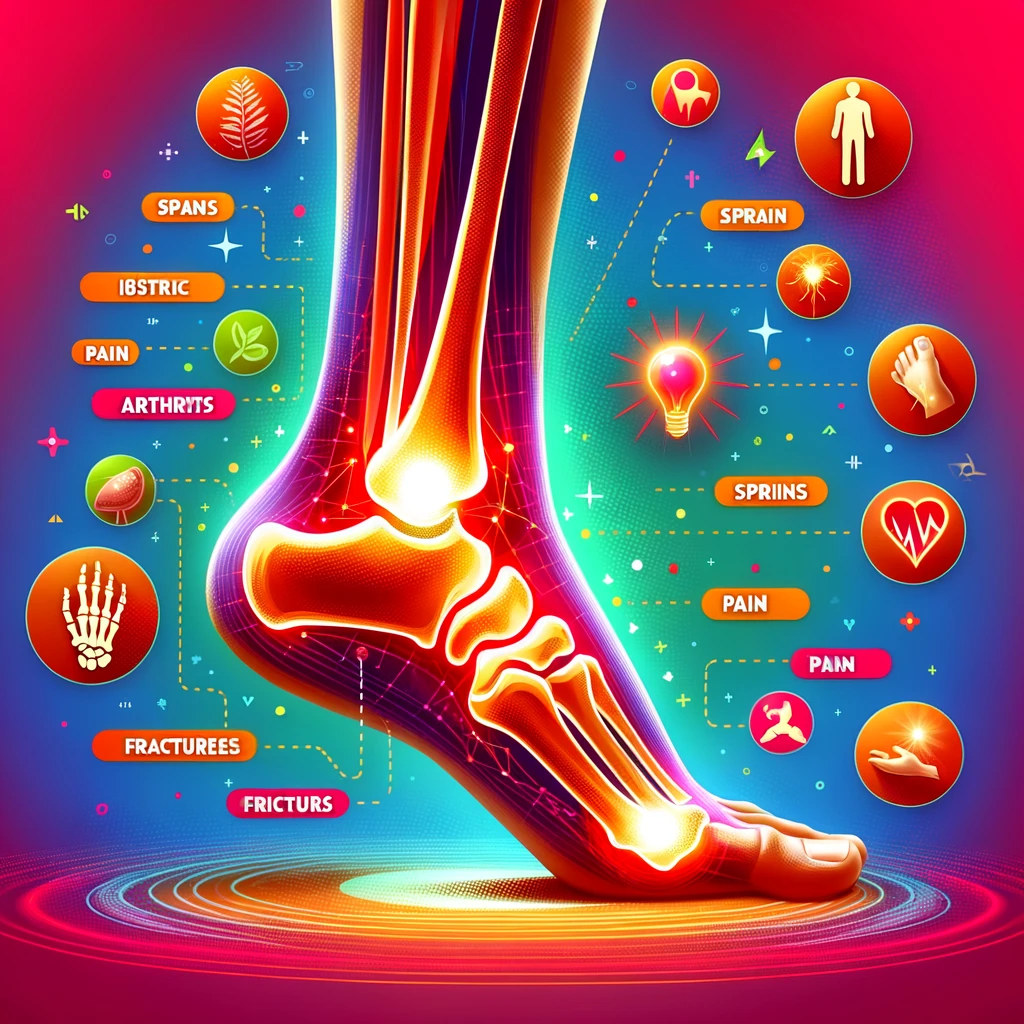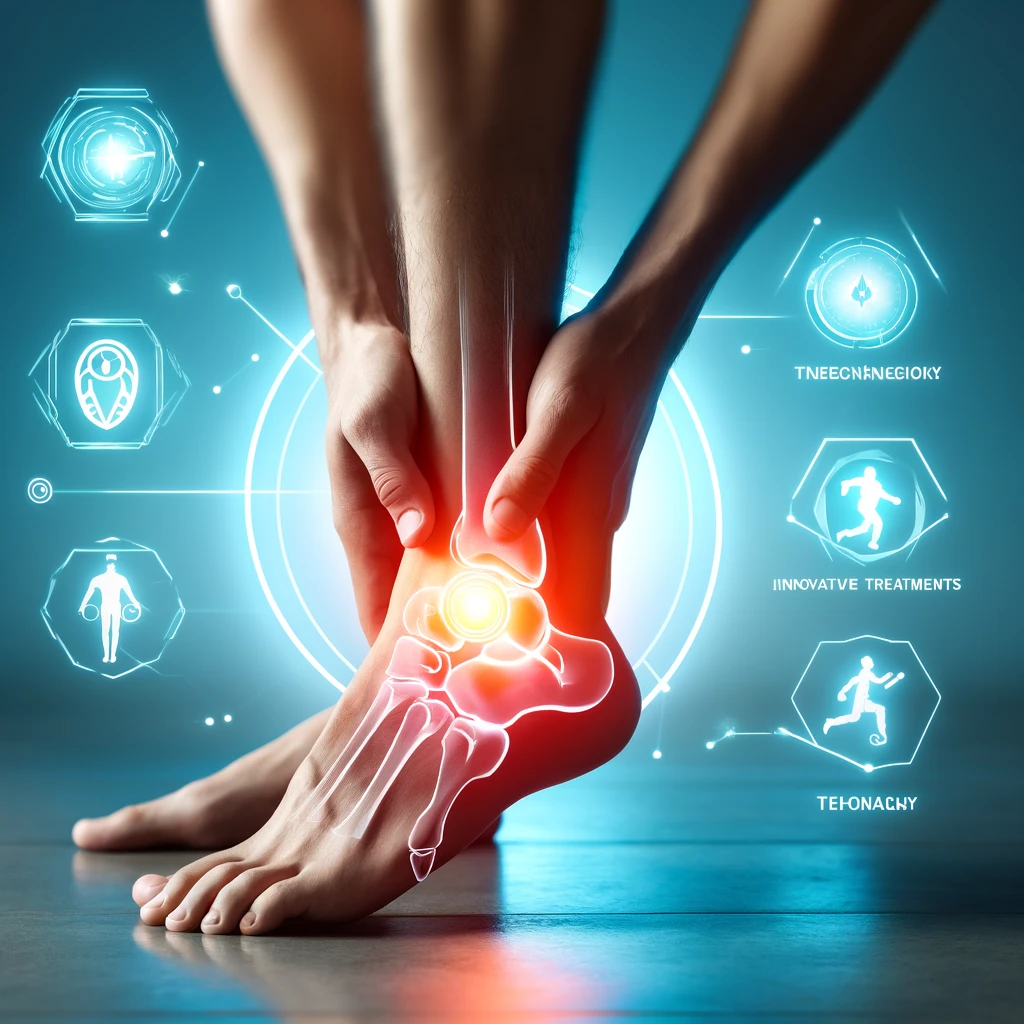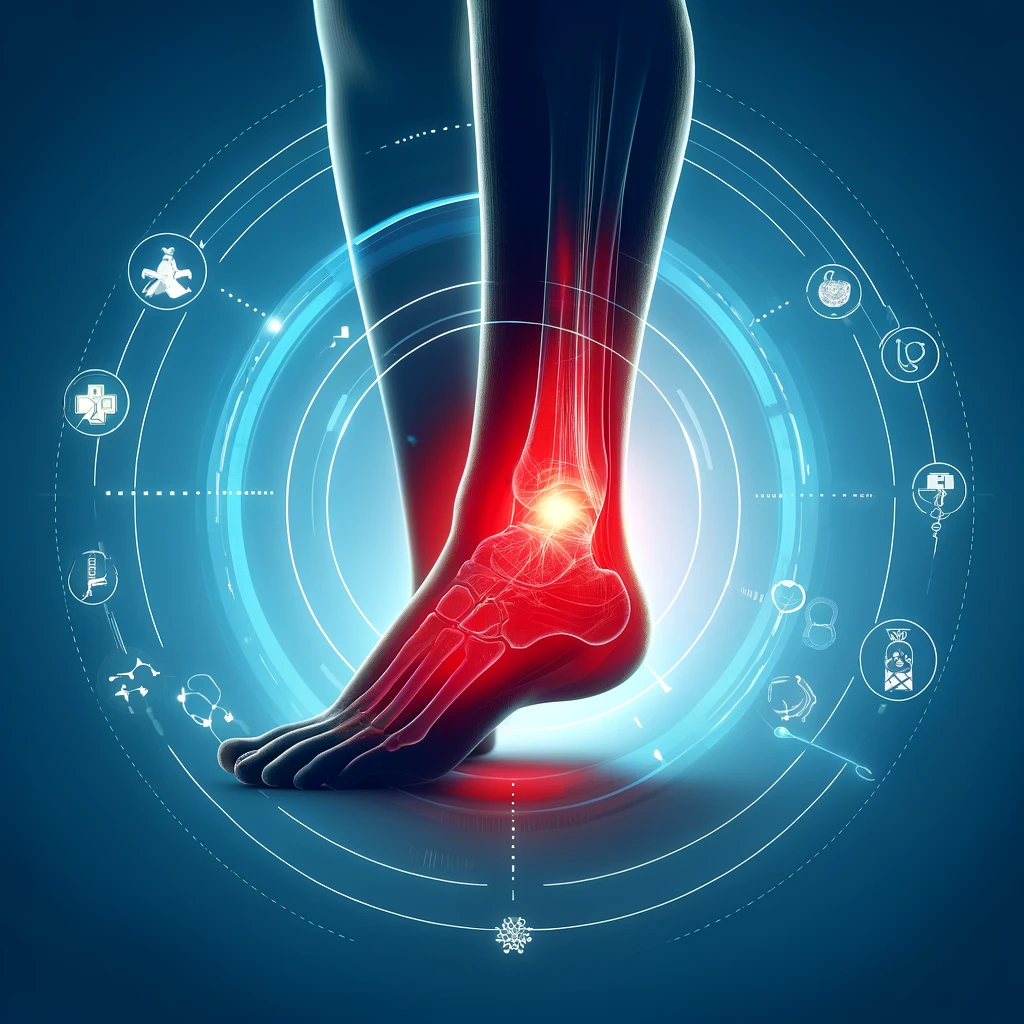
Table of Contents
Ankle pain is a common problem that affects people of all ages. It can be caused by a variety of factors, ranging from acute injuries to chronic conditions. Understanding the causes of ankle pain is essential for effective treatment and prevention. Let’s explore the potential reasons behind that persistent ankle discomfort.
Anatomy of the Ankle
To understand ankle pain, it’s important to know a bit about the ankle’s anatomy. The ankle is a complex joint made up of bones, cartilage, ligaments, and tendons. It connects the lower leg to the foot and allows for movement and support. This intricate structure, while strong, is susceptible to various injuries and conditions.
Common Causes of Ankle Pain
Sprains and Strains
Ligament Injuries: Ankle sprains are among the most common causes of ankle pain. They occur when the ligaments that support the ankle are stretched or torn, usually due to a sudden twist or turn.
Muscle Strains: Overstretching or tearing the muscles and tendons around the ankle can cause significant pain and limit mobility.
Fractures
Fractures or breaks in the bones of the ankle can result from falls, accidents, or high-impact sports. These injuries often require medical intervention to heal properly.
Tendinitis
Tendinitis is the inflammation of the tendons around the ankle, often due to overuse or repetitive activities. This condition can cause chronic pain and stiffness.
Arthritis
Osteoarthritis: This type of arthritis is caused by the gradual wear and tear of cartilage in the ankle joint.
Rheumatoid Arthritis: An autoimmune condition that causes inflammation in the joints, including the ankles.
Gout: A type of arthritis caused by the buildup of uric acid crystals in the joint, leading to severe pain and swelling.
Less Common Causes of Ankle Pain
Infections: Bacterial infections in the ankle joint can cause severe pain and require prompt medical treatment.
Tarsal Tunnel Syndrome: This condition occurs when the tibial nerve is compressed as it travels through the tarsal tunnel, leading to pain and tingling in the ankle and foot.
Nerve Compression: Compression of the nerves around the ankle can cause pain, numbness, and tingling sensations.
Symptoms to Watch For
Recognizing the symptoms associated with ankle pain can help identify the underlying cause. Common symptoms include:
- Pain Location: The specific area of pain can indicate the source of the problem.
- Swelling: Swelling is often a sign of injury or inflammation.
- Stiffness: Difficulty moving the ankle joint can point to arthritis or other joint issues.
- Redness and Warmth: Signs of infection or severe inflammation.
Risk Factors
Several factors can increase the likelihood of ankle pain, including:
Age: The risk of ankle problems increases with age.
Activity Level: High-impact sports or sudden increases in activity can cause ankle pain.
Previous Injuries: Past ankle injuries can make the joint more susceptible to future problems.
Medical Conditions: Conditions like diabetes or obesity can contribute to ankle pain.
Diagnosis of Ankle Pain
Diagnosing ankle pain typically involves:
Physical Examination: A doctor will assess the ankle’s range of motion and look for signs of injury.
Imaging Tests: X-rays, MRIs, or CT scans can provide detailed images of the ankle’s structure.
Lab Tests: Blood tests can identify infections or autoimmune conditions like rheumatoid arthritis.
Treatment Options
Treatment varies depending on the cause and severity of the pain:
Medications: Pain relievers and anti-inflammatory drugs can help manage symptoms.
Physical Therapy: Exercises to strengthen the muscles around the ankle and improve flexibility.
Surgery: In severe cases, surgical intervention may be necessary to repair or replace damaged structures.
Lifestyle Changes: Weight management and low-impact exercise can alleviate ankle pain and prevent further issues.
Home Remedies for Ankle Pain
Simple home remedies can provide relief for mild ankle pain:
R.I.C.E. Method: Rest, Ice, Compression, and Elevation can reduce swelling and pain.
Exercise and Stretching: Regular, gentle exercises can keep the ankle joint flexible and strong.
Dietary Considerations: A diet rich in anti-inflammatory foods can help manage pain.
Preventing Ankle Pain
Prevention is better than cure. Here are some tips to keep ankle pain at bay:
Proper Warm-Up: Always warm up before engaging in physical activity to prepare the muscles and joints.
Strengthening Exercises: Regularly strengthening the muscles around the ankle can provide better support.
Protective Gear: Using ankle braces or supports during high-impact activities can prevent injuries.
Impact of Ankle Pain on Daily Life
Ankle pain can significantly affect your daily activities:
Mobility Issues: Pain can limit your ability to walk, run or even stand for long periods.
Psychological Effects: Chronic pain can lead to stress, anxiety and depression.
When to See a Doctor
It’s essential to seek medical attention if you experience:
- Severe pain that doesn’t improve with rest
- Significant swelling
- Inability to bear weight on the ankle
- Signs of infection, such as redness and warmth
Conclusion
Understanding the causes of ankle pain is crucial for effective treatment and prevention. Whether the pain stems from an injury, arthritis, or another underlying condition, addressing it promptly can help maintain your mobility and quality of life. Implementing preventive measures, such as proper warm-ups and wearing supportive footwear, can reduce the risk of ankle pain. Additionally, exploring various treatment options, from home remedies to medical interventions, can provide relief and improve overall ankle health. Stay proactive in managing your ankle pain, and don’t hesitate to seek professional medical advice when needed to ensure long-term wellness and activity.
FAQs
Can ankle pain be a sign of something serious?
Yes, ankle pain can sometimes indicate serious conditions like infections or severe injuries. Always consult a doctor if you have concerns.
What can I do to prevent ankle pain?
Maintain a healthy weight, engage in low-impact exercises and use proper techniques during physical activities to prevent ankle pain.
Are there any specific exercises for ankle pain relief?
Yes, exercises like ankle circles, calf raises and stretching can help strengthen the muscles around the ankle and reduce pain.
How long does it take for an ankle injury to heal?
The healing time for an ankle injury varies depending on the severity. Minor injuries might heal in a few weeks, while severe injuries could take months.
Can diet affect ankle pain?
Yes, a diet rich in anti-inflammatory foods can help reduce ankle pain. Foods like fish, nuts and leafy greens are beneficial.



